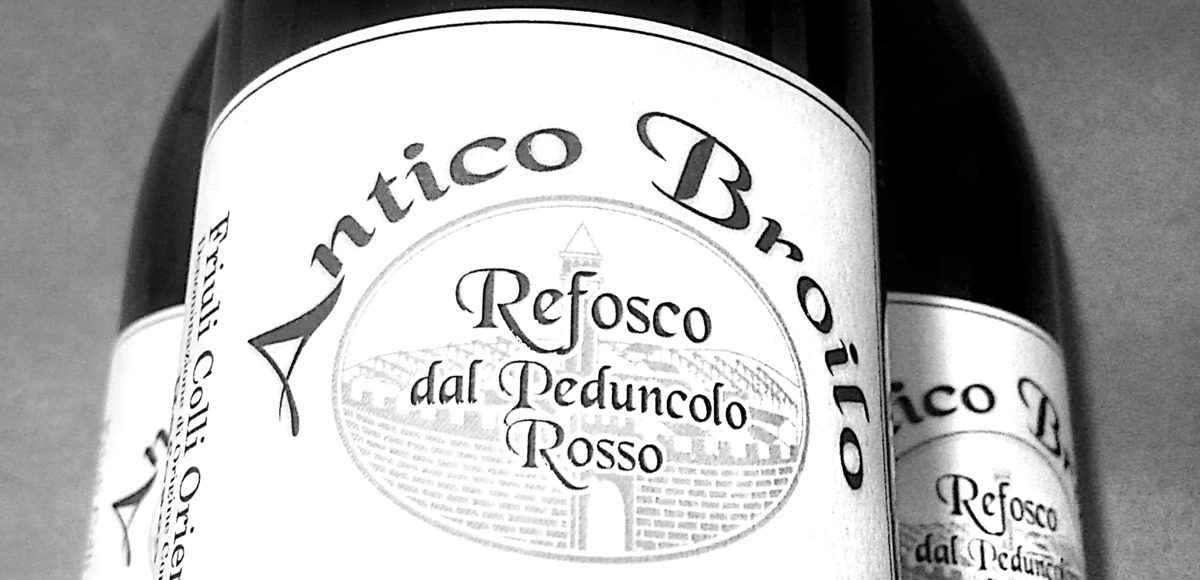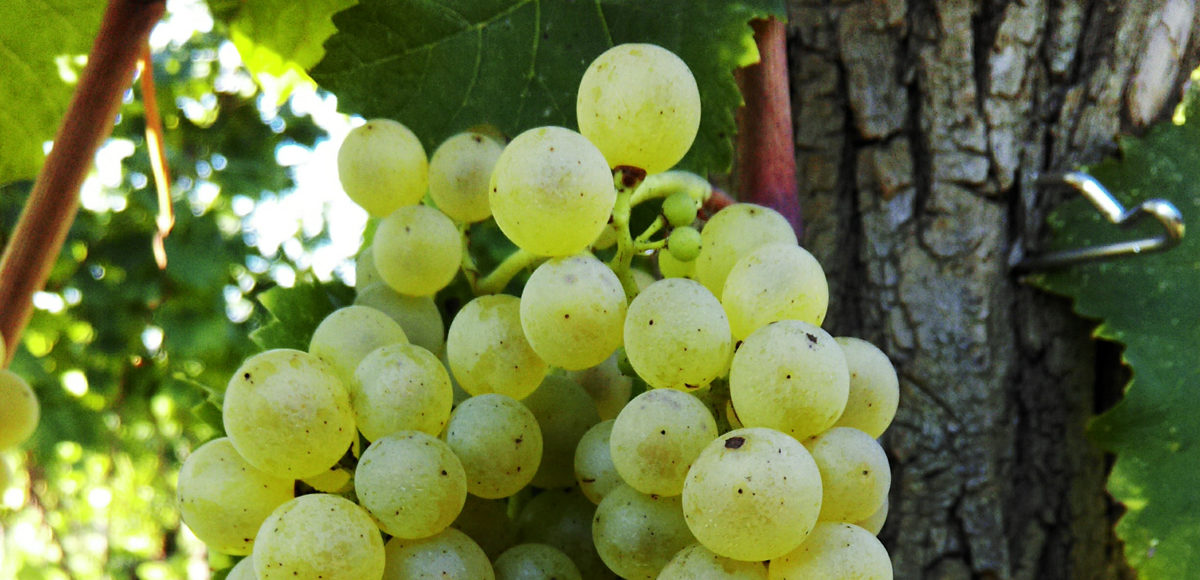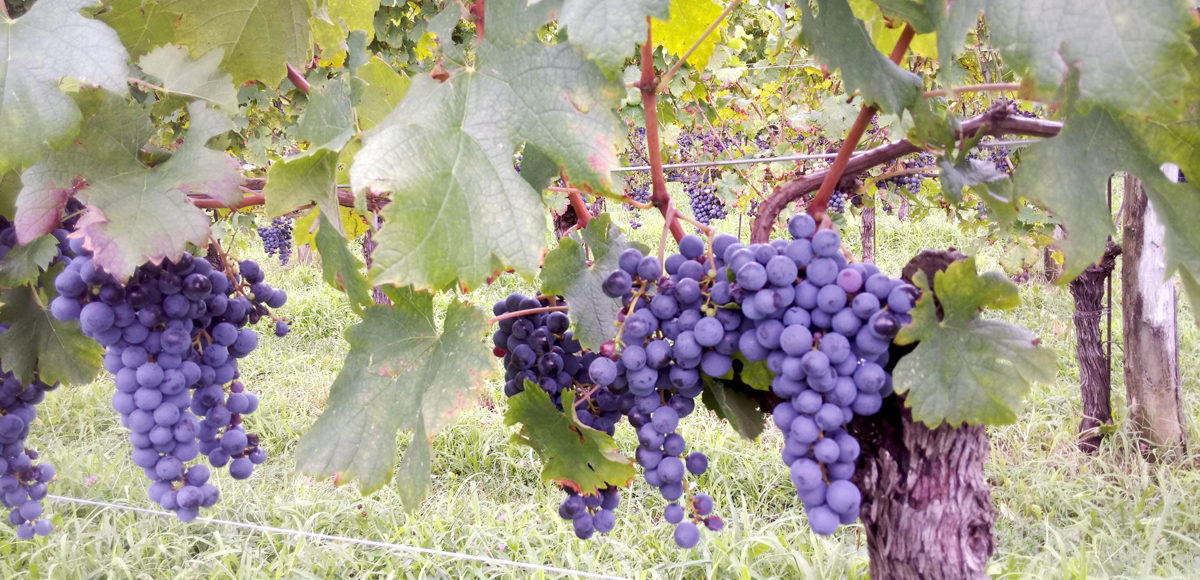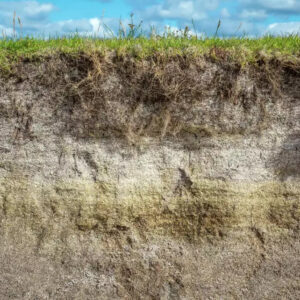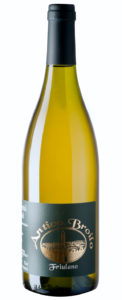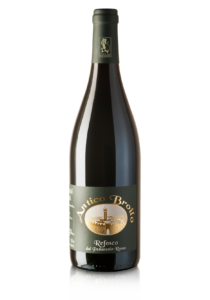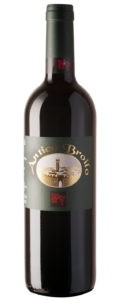“The desire to be organic for us is not to put on the label a stamp, but to live the vineyard as if it is your life.” — Massimo Duri
Giovanni and Massimo Duri, father and son, are the fourth and fifth generation to cultivate Antico Broilo’s 6 hectares in the tiny commune of Prepotto. “Traditions are for us the most beautiful things that can be handed down,” notes Massimo. “We made a conscious choice to cultivate only varieties that were already present on the estate, to keep our history in the vineyard.” For the Duris, this means old vines and massal selections of four native varieties that scarcely survived the 20th century: friulano, ribolla gialla, refosco dal peduncolo rosso, and the pride of Prepotto: schioppettino. Their careful preservation of the vines and the culture that surrounds them extends to organic farming, tightly controlled yields, hand harvests, and minimal cellar intervention—native yeasts, racking by gravity flow, little added SO2, brief skin maceration for the whites, long aging in wood for the reds. This quartet of native grapes speaks a distinct local dialect to which the Duris are intimately attuned. Their wines convey it with purity, beauty, and character.
Prepotto
The Colli Orientali are the easternmost hills of Friuli, a corner of far northeast Italy tucked between the broad plain of Friuli Grave and the rising hills of Slovenia, mid-way between the Julian Alps and the Adriatic Sea. The region is gifted not only with a verdant beauty and fascinating interplay of cultures, but also a constant and beneficial exchange between cooling air masses from the north and warming sea breezes from the south—mitigating humidity, tempering summer heat, and drying the vines in what is the rainiest part of Italy.
Soils throughout the Colli Orientali are known locally as ponca. The distinctive, alternating bands of sandstone and calcareous marls were pushed to the surface as part of the broader Alpine orogeny. The ponca is topped by fine clay carried downstream from the surrounding uplands. These soils are prized for the texture, concentration, and—thanks to their relatively high pH—acidity they give to the wines.
Prepotto itself is a tiny subzone of the Colli Orientali that Massimo describes as being “surrounded by sweet hills, narrow and long and running along the Judrio River,” a waterway that separates the Colli Orientali from Collio and Slovenia. “The hills following the path of the river channel a light breeze that daily manages to create a particularly interesting thermal excursion, especially for our schioppettino,” he explains.
Small, tradition-minded producers like the Duris have staked a claim for the unique expressions of their native grapes on terroir to which they are singularly adapted.
Ribolla gialla has been grown in eastern Friuli since at least the 13th century, but after phylloxera and the travails of the last century, wines made from this variety had dwindled to less than 1% of Friuli’s DOC production. The 1990s marked a turning point, though the grape still commands just 2% of Friuli’s vineyard land. As Gravner and Radikon have taught the world, the grape is particularly suited to maceration. The Duris’ favor skin contact, albeit brief, “to combine the appeal of acidity with the intriguing subtlety of the whistle-clean tannins,” as Massimo says.
Friulano also has a deep history in the region, as its name indicates, though genetic testing has revealed it to be identical to sauvignon vert a.k.a. sauvignonasse. Despite its thin skin, it is fairly resistant. The wines tend to be aromatically delicate, with fresh floral and almond notes, and are light in color and body. They, too, take well to the one to two days of maceration the Duris favor.
Refosco dal peduncolo rosso, the refosco “of the red stalk,” is the best known of the genetically diverse refosco group. It has also long been at home in Friuli. DNA profiling shows a kinship with the northern Italian red varieties teroldego, lagrein, corvina, and corvinella. It thrives in poor, calcareous-clay soils and on hillsides, ripening late and characterized by intensely dark- blue berries with thin but resistant skins. The wines feature a strong tannic structure, with a characteristic northern profile of dried cherries, herbs, almonds, and violets.
Schioppettino takes its name from the Italian word for “crackling,” in reference either to the variety’s crunchy berries or bottle refermentation that made the wines slightly sparkling in the past. It, too, has been cultivated in Friuli since the 13th century, when, according to Italian wine scholar Ian D’Agata, “the amphitheater of Albana-Prepotto was almost completely under vine and schioppettino represented about 75 percent of the vines planted there.” Today, the grape is at home almost exclusively in Prepotto, where it thrives in alluvial soils with optimal ventilation amid warm days and cold nights. However, this variety is susceptible to extreme millerandage and flowering problems, especially in rainy, cold springs, making it is an unreliable yielder. For a time, planting schioppettino was banned outright, under penalty of fine from local authorities. The grape became so obscure, it disappeared from the official Italian grape registry. But in the ‘70s, local advocates mounted an impressive effort to effect the grape’s revival. It took decades, but in 2008, the wine obtained its own designation Schioppettino di Prepotto. Still, the quantity of schioppettino the 20-odd small growers who work with the grape can produce remains tiny. The Duris’ wines give us a rare opportunity to experience a wine of spirited freshness, redolent of violets, black fruit, earth, and a syrah-like pepper note thanks to high levels of rotundone. Fine-grained tannins and lively acidity lend structure and finesse and the wines age remarkably well, gaining savory elements and silky complexity with time.
Winemaker
Massimo, 36, is a trained agricultural expert. Yet he credits his parents and grandparents with “making me love this tiring job.” He explains, “when you work as a family, you can’t do everything yourself. I always found it nice to share our passions and tastings year after year. My father is and will be a very important reference for me. He tells me to see a wine in perspective, drink it now and imagine it in ten years, that’s the secret. I also think that my father loved from a young age this work that makes you sense aromas and see horizons that only can be seen in nature. The most beautiful memories are those of flowering, when the whole vineyard smells of honey or with the reaching of autumn when the leaves turn colors and the landscapes become paintings.”
Vineyards and farming
“Decades ago,” Massimo contextualizes, “wine was seen as a food used both for meals and for calories in laborious hours of work in the country. So the vineyards, in my opinion, were exploited more for the quantity of grapes they gave because people needed a light and unstructured wine.”
By the early 1990s, things had obviously changed. “We immediately understood the way to go thanks to my father, who started looking for qualitative techniques—selection of the bunches, cleaning of the vines, selection of the shoots.” Today, this means taking massal selections from centenarian vines “to keep our history in the vineyard.”
“We regard our estate as a garden,” notes Massimo. “Our 6 hectares are all in a single body and mainly consist of clay with sand, capable of drying the soil quite well in case of long rainy periods. Our valley floor is very rich in organic substances and fine earth, typical of this land. We focus on vine quality, monitoring bunch loads per vine—after reducing yields by as much as half, to 40-50 hl/ha. We never force the productivity of our vines, which means they are able to adjust to dry or wet periods, even to drought.” After many years of growing fruit on the traditional cappuccina (Friulian double-arched cane), the Duris switched to Guyot, and added cover crops to further constrict yields.
“Our basic principles are to preserve the typicity of the vine, avoiding chemical fertilization, and use curative products allowed by organics,” Massimo asserts. Despite the challenges of farming in Friuli’s rainy climate, the Duris are intent on minimizing the application of copper sulfates and are always experimenting with new plant protection products, such as a current investigation into one based on seaweed. “The desire to be organic, for us, is not to put on the label a stamp, but to be in harmony with the lunar paths, to live the vineyard as if it is your life,” Massimo says. “It is very important to know where we are, how the soil is made, what vines there are, and above all to know ourselves. We have always employed eco-friendly farming methods and act in full respect of the ecosystem. As proof of the healthfulness and eco-friendliness of our approach, we can point to the presence in our plots of small birds that choose our vines as their nesting site. We tend the vines and thin the canopy regularly, often spotting eggs or newly opened shells, a wonderful testimony to the estate’s respect for nature and proof of its sustainability.”
In the cellar
After hand harvesting and bringing the grapes to the crush pad in small trays to avoid damage, they are gently pressed and spontaneously fermented. “It’s normal for us to use native yeasts,” notes Massimo. “My grandfather did it, my father did it. When you use yeasts that are born in nature or on the grapes you realize the commitment that nature already makes to create them, so I commit myself to express a traditional wine with those yeasts. We use low quantities of SO2, added only at bottling and depending on the vintage, because it is important for long aging in bottle.”
Ribolla gialla and friulano are skin macerated for one to two days, go through malo, are raised 90% in stainless steel, 10% barrique for eight to nine months on the fine lees, and another three after bottling.
Schioppettino, Massimo relates, “is harvested only in the early hours of the morning so as to not lose aroma and spice. Maceration is in stainless, and aging in barrique (10% new) for 24 months.” Refosco dal peduncolo rosso is harvested around mid-September as berry maturity is essential to avoid vegetal notes in the wine. Maceration here is also in stainless for 20 days, with 24 months elevage in barrique (again 10% new).
The Duris are committed to regenerative practices wherever possible in the cellar: all racking is by gravity flow, waste water is repurposed, lighter-weight bottles and responsibly manufactured corks are favored.
